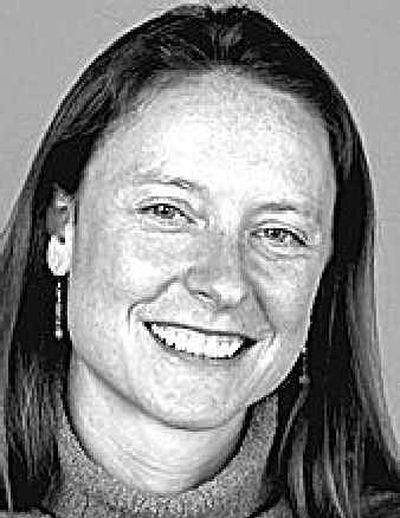Historic home free for taking – with a catch

At the corner of 4th and G streets in Cheney sits a 120-year-old house that needs a new home.
The James Madison Moorman House was owned by the same family for more than 60 years. Moorman’s daughter, Dorothy Anderson, was in the midst of renovations — she’d added a new roof and a new foundation — when failing health interrupted. The home was sold this year.
The new owner plans to raze it to build apartments on the large lot. However, he’s told the city he’d give the home to anyone who will pay to move it, said Susan Beeman, secretary to Cheney’s Historic Preservation Commission.
The city’s historic register points out that the home is the only remaining vernacular Gothic Revival style residence in Cheney. The exterior is well-preserved, with its original window moldings and peaked roof, and gables on the front and side. The entry has a small porch, its roof supported by a single post.
But there’s more to the home than its architectural features, says Beeman, a carpenter’s daughter who says she has sawdust in her veins.
“I walk into this house and I see possibilities,” Beeman said. “It’s got old-time charm to it. I find it very easy to close my eyes and see what it might have looked like in 1950, with people coming over to play cards.
“If you care about old things and that’s of value to you, you might be the kind of person who wants to come in and strip the paint and repair it yourself.”
Beeman may be a romantic, but she’s a realist, too. She wants to see the home saved, but is clear and serious about the work required to make it livable. The interior would need to be almost completely gutted. Water damage has warped walls and ceilings and caused the original cloth-backed wallpaper to peel from the walls. The home is 1,000 square feet, with four bedrooms, a bathroom, kitchen and living space.
The city of Cheney is promoting the home on its Web site, but requests serious inquiries only. A mover told the city it would cost up to $16,000 to move the home within Cheney and more outside, Beeman said.
Anderson placed the home on the historic register in 1997, perhaps to capture the property tax breaks associated with the listing, or maybe to give it its proper place in history. In either case, that listing alerted the Historic Preservation Commission about the demolition threat.
City law says demolition of structures listed on the registry can’t occur without a waiver from the commission. The commission can’t prevent the demolition, but it can take 45 days to grant the written decision.
“We’re in the middle of that … 45-day period,” Beeman said.
So time is running out. The owner would like to raze the home in January and get started on his building project in March, Beeman said. The commission doesn’t want to stand in the way of private property rights. But the commissioners are crossing their collective fingers and toes that perhaps someone out there will see the old house’s charm.
There is a wonderful children’s book, also somewhat of a historic relic at this point, but whose message never seems to fade. It’s called “The Little House,” and it was written by famed children’s author Virginia Lee Burton in 1942.
It tells of a little house living in the country that is loved by its residents, who play on its lawn filled with flowers. The house is drawn with a big smile on its face. But over time, a city grows up around the house and it falls into disrepair. Gradually the smile fades as the house is surrounded by pollution, tall buildings and people rushing by with no time to appreciate its beauty.
One day, a descendant of the home’s original owners discovers it boarded up and sad and recognizes it as the beloved home of her ancestors. She loads it on a truck and takes it away from the city to a new field of flowers, where its smile returns.
The city of Cheney is hoping a similar fate awaits the Moorman home in some greener pasture of the Inland Northwest.